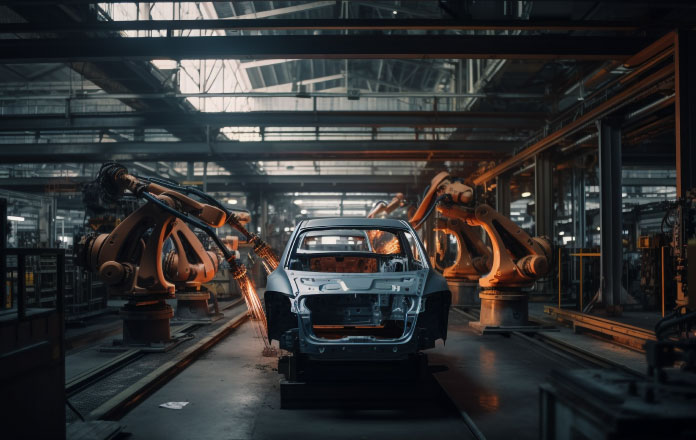Breathtaking sea views and oceanfront properties are unique to coastal climates, attracting homebuyers, investors and tourists year-round. Unfortunately, this boon is the bane of an automaker’s existence. The harsh saltwater quickly corrodes metals, causing permanent damage. Could breakthroughs in protective automotive coatings provide a solution?
The Importance of Proper Protection in Coastal Climates
The closer metal is to the shoreline, the faster it degrades. The humid, salty air corrodes metal 10 times faster than air in noncoastal areas. Moreover, saltwater causes corrosion five times faster than freshwater. This damage adversely affects efficiency and longevity, causing broad economic impacts.
Coastal infrastructure degrades much faster than inland infrastructure. Original equipment manufacturers can hardly stray from using steel and aluminum, but these metals are particularly susceptible to oxidation. Protective automotive coatings are necessary to prevent localized losses along coasts.
Key Selection Criteria Influencing the Future of Coatings
Protective coatings are the last defense against sea spray and salty ocean air. Suppliers have spent years refining material attributes, so wax, paint sealant, ceramic and powder coating dominate the market. For instance, powder coating — which has existed since the 1940s — accounts for an estimated 15% of the industrial finishing market.
The industry is no stranger to innovation, but original equipment manufacturers (OEMs) tend to stick with proven processes and time-tested materials. That may soon change. Technology is advancing rapidly, enabling companies to develop solutions with superior mechanical, chemical, thermal and anticorrosive properties.
Simultaneously, regulatory agencies are reviewing traditional protective automotive coatings with increased scrutiny because application and disposal can create volatile organic compounds (VOCs) and chemical pollution. Coastal regions must protect sensitive marine environments, so environmental laws are becoming increasingly robust.
Breakthroughs in Protective Automotive Coating Technology
Several noteworthy emerging innovations in the protective automotive coating market include environmentally friendly formulations, nanotechnology and smart coatings.
Graphene-Based Nanotechnology
Graphene represents a breakthrough in car care technology. Despite being around 200 times stronger than steel, it is exceptionally lightweight and flexible. This is because it comprises a single layer of carbon atoms tightly arranged in a hexagonal lattice. Its unique structure provides extraordinary strength, durability and ultraviolet resistance.
Graphene-based polymer nanocomposites are incredibly thin. Reducing the film’s nominal thickness minimizes resource consumption without sacrificing performance.
Nanotechnology company Gerdau Graphene recently pioneered graphene enhancements for industrial applications. The latest addition to its line of anticorrosion paint and coating additives demonstrated a 70% increase in corrosion resistance when tested with concentrated salt spray.
Self-Healing Smart Coatings
Smart coatings — often called self-healing films — are a particularly exciting development because they autonomously respond to external stimuli. When oxidation occurs on a metal surface, micromaterials release active corrosion inhibitor agents to repair it. The trigger can be based on humidity, pH, ionic strength or electromagnetic irradiation.
Environmentally Friendly Films
Coating suppliers can use numerous kinds of biomass to produce protective automotive coatings. Depending on the formulation and application process, they may even be able to use waste products. Vegetable oil is promising because it is widely available, highly soluble and nontoxic, making it economical and safe for use indoors.
The market is evolving rapidly. Wanhua Chemical is among the first coating suppliers to launch a zero-VOC product. Dr. Weiqi Hua — the executive vice president — believes sustainable materials are the future of the industry. He offers the company’s biomass-based pentamethylene diisocyanate as an example, noting it reduces carbon emissions by 20%.
Should OEMs Take a Risk on These Disruptive Materials?
Nanotechnology, environmentally friendly formulations and self-healing protective automotive coatings sound exciting, but will they be effective at scale? The answer depends on research and development teams. Automakers may hesitate to adopt these new-and-improved solutions if it means retrofitting their entire facility.
However, even if the upfront investment is steep, they may be swayed by a lower total cost of ownership and value-added benefits. For instance, using these materials with machines like plural component proportioners can reduce VOC emissions, improve worker safety and reduce waste. When taken together, these incremental improvements are appealing.
Promoting graphene as stronger than steel or endorsing a material’s sustainability benefits could be beneficial. If OEMs can convince consumers of these selling points, they can create a market for emerging technologies.
Interest already exists. For example, sustainable polymer coating technology saw a 16.8% increase in usage over the past two decades, driven by rising awareness of sustainability and increasingly strict environmental regulations. It may only be a matter of marketing.
The Future Outlook for Coastal and Offshore Applications
Vendor selection, material availability, consumer interest and ease of upkeep will influence these innovations’ penetration rates. While there is no guarantee they will replace long-standing technologies, research and development teams are actively refining application safety, production efficiency and cost control.
Advancements like artificial intelligence and digitalization could catalyze adoption by guiding computational chemistry and molecular design. Coatings suppliers could easily create hyper-specific solutions for coastal and offshore applications. No one can predict the future, but the outlook for these protective automotive coatings is promising.



